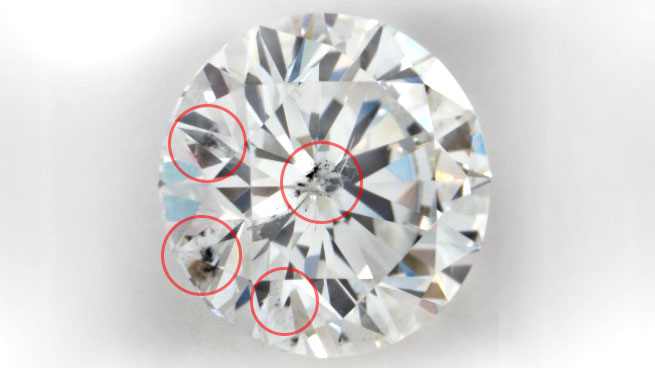When shopping for a diamond, it can be easy to focus on the clarity grading of the diamond without fully understanding what it means. Without this understanding, you could mistakenly chase an incredibly rare ‘Flawless’ diamond that comes with a hefty price tag; when in reality you could get a cheaper gem from a lower classification that will appear the same as the aforementioned ‘Flawless’ gem.
Purchasing diamonds is expensive enough without a lack of knowledge adding to that price tag. So, be sure to do your research, starting here with our guide to diamond clarity.
What are the grades of diamond clarity?
Firstly, there are a very rare amount of ‘FL’ or ‘IF” diamonds around, this means that these have no visible imperfections, even under 10x magnification. However, even these can still have minor blemishes on the surface.
Next, there are VVS diamonds; these are split into VVS1 and VVS2. These gems have inclusions that are only slightly visible under 10x magnification. For more information on these diamonds, be sure to read this guide: https://yourdiamondguru.com/a-guide-to-vvs-diamonds/.
Then, there are VS diamonds, again split into VS1 and VS2. These imperfections will be a bit easier to spot under 10x magnification, they will, however, be difficult to notice with the naked eye. Similarly, the next grade; SI (1 and 2) will have inclusions easy to spot under 10x magnification, and only some cases will be visible to the naked eye.
Following on from that, the grades reach I (1, 2 and 3). These imperfections tend to be very obvious under magnification and can be seen with the naked eye. Diamonds of these grades may be susceptible to lesser durability.
How are they graded?
In the process of grading a diamond, five factors are taken into consideration when judging the inclusions and imperfections; size, number, nature, location and relief.
In terms of size, typically, the larger the inclusion the greater the impact it will have on the clarity grade. Especially when you consider that large inclusions can have an impact on how durable the gem is. It’s important to note that the size is taken into account relative to the size of the overall stone.
When it comes to the number of inclusions, the more there are, the more impact they have on the clarity grade. The number is not as important as how visible they are, however. Concerning the nature of the inclusion, this takes into account whether the blemish is superficial or has some depth to it. This brings us to the difference between an inclusion and a blemish, if the imperfection penetrates and has depth to it, then it’s an inclusion. However, if it’s mainly superficial on the surface then it’s regarded as a blemish.
As for location, those closer to the centre of the table are more likely to affect the clarity of the gem, whilst those close to the girdle are much more difficult to see. Any inclusions that are near the pavilion can reflect, whilst any past the culet will have less impact on the grading.
Finally, relief refers to how distinct the inclusion is in contrast to the diamond. The more relief there is, the higher the impact on the clarity. Now you have a solid understanding of diamond clarity, you’re one step closer to purchasing the perfect gem.


